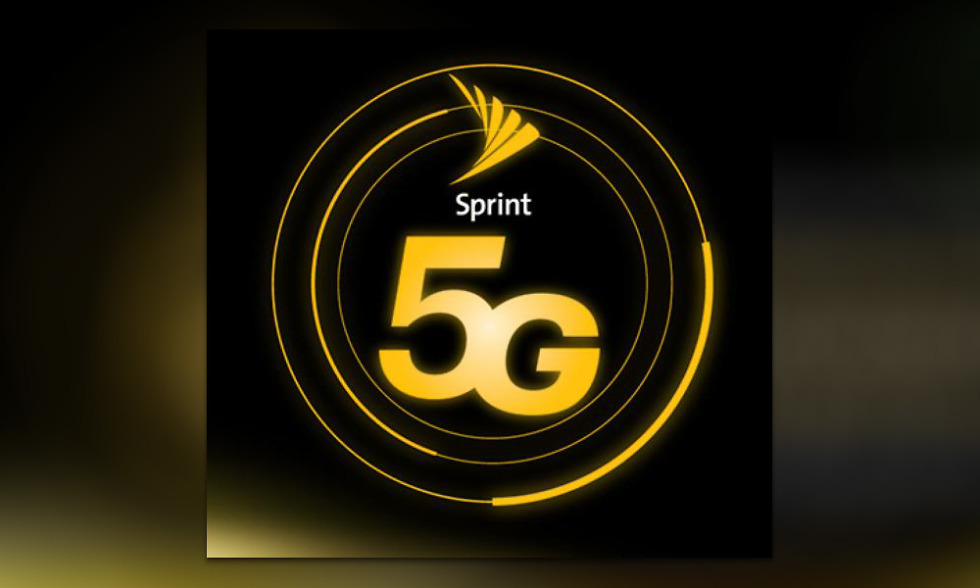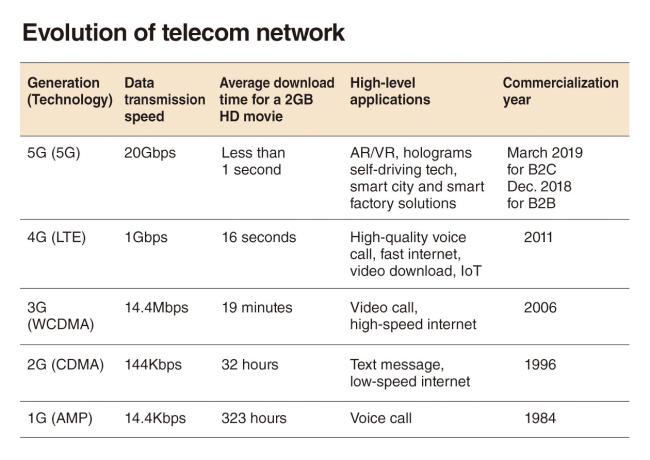Month: January 2019
Sprint to offer 5G Samsung Smartphone in Summer 2019
Sprint today confirmed plans for an innovative, pre-standard 5G smartphone expected to launch in summer 2019 from Samsung. The company says that Sprint customers will be among the first in the world to experience the incredible speed, reliability and mobility of 5G on this feature-rich handset. Note that AT&T and Verizon have also announced smartphone from Samsung for the 2nd half of 2019.
“We are proud that our longstanding relationship with Samsung has delivered some of the most innovative mobile technologies to our customers over the years – and this tradition continues with 5G,” said Dr. John Saw, Sprint chief technology officer. “Samsung is one of our key 5G network infrastructure Massive MIMO providers, so we are delighted that they will also deliver one of our first 5G smartphones, putting blazing fast connectivity right into our customers’ hands.”
This Samsung device will offer dual-mode connectivity to Sprint’s LTE and 5G network. For 5G and LTE, it will support Sprint’s 2.5 GHz spectrum. In addition, it will support Sprint’s 1.9 GHz spectrum (band 25), 800 MHz spectrum (band 26) and other LTE spectrum bands for roaming. Additional device specifications and exact timing will be announced later.
That’s in contrast to the mmWave frequency technology that’s favored by AT&T and Verizon (defined as being between 30GHz and 300GHz). In December, both AT&T and Verizon announced that they would be carrying upcoming 5G smartphones. Verizon was first, and it announced that it would be selling one of the phones in the first half of 2019. AT&T responded by saying that not only would it have that same phone early in the year, but it would also offer a second 5G phone from Samsung in the second half of the year.

5G promises new levels of innovation and progress to connect people, places and the billions of things Sprint customers do with super-fast speed and ultra-reliable wireless connectivity. Customers should experience a shift from 4G to 5G with full-length HD movie downloads in seconds instead of minutes. Graphic-heavy videos and high speed games should play without delays, hiccups or lag-time.
Sprint is building its 5G product ecosystem to give customers choice in how they connect to Sprint’s 5G network. This is the third device announced for Sprint’s 5G network to date. In August, Sprint was the first U.S. carrier to announce timing for a network-integrated 5G smartphone, and it followed in November with news of a 5G mobile smart hub.
In the first half of 2019 Sprint plans to launch its mobile 5G network in nine of some of the largest cities in the U.S.–Atlanta, Chicago, Dallas, Houston, Kansas City, Los Angeles, New York City, Phoenix and Washington, D.C., with additional markets to be announced. Massive MIMO technology is a key part of Sprint’s 5G strategy and network build. This breakthrough technology dramatically increases the capacity of Sprint’s LTE Advanced network today and is software upgradable to 5G. With Massive MIMO at the foundation of its mobile 5G service, Sprint can meet its customers’ demand for unlimited data and high-bandwidth applications, such as television in high definition and virtual reality.
To follow Sprint’s Next-Gen Network build out and its road to 5G, visit http://newsroom.sprint.com/network/.
…………………………………………………………………………………………………………………………………………………………………………..
Samsung is reportedly working on at least two variants of its upcoming Galaxy S10 smartphone: one with a Qualcomm modem and the other with a Samsung-made equivalent. One of these is also rumored to be a “Beyond X” version of the phone with a 6.7-inch screen. None of the three carriers have confirmed exactly which model of Samsung phone they’ll be carrying. Sprint stopped short of confirming that Samsung’s device would be the first 5G phone on its network, saying only that it would be “one of” the first after. The US carrier previously announced that it would carry a 5G phone from LG earlier in the year, and it also said it was working with HTC to develop a 5G “smart hub.”
D-Link announces 5G NR Gateway, but not which “5G” networks it’s compatible with
D-Link’s DWR-2010 “5G NR” Enhanced Gateway is one of the first gateway available for pre standard 5G broadband networks. D-Link claims it delivers speeds up to 40x faster than typical fixed broadband speed in the U.S. The average U.S. fixed-line broadband speed is around 70Mbps, the company claimed, citing a Forbes report.
Editor’s Note:
D-Link has not revealed which pre-standard 5G network this device will be compatible with. One would assume it would be for fixed broadband wireless access, which Verizon already offers but that service is based on their V5GTF proprietary spec. Verizon has said it would transition its (fake) 5G fixed service to 5G NR (3GPP Release 15)in the near future but has not said when that might be. C-Spire also offers a proprieatary fixed 5G service, but again it’s not compatible with 5G NR. Hence, we wonder where this D-Link device could actually be used.
……………………………………………………………………………………………………………………………………………………………………………..
“With expanded spectrum and new applications, 5G is going to bring more competition to the broadband market within the coming years,” said Raman Bridwell, vice president of product and services, D-Link Systems, Inc. “This gateway will help more people access that network in more places with the same wireline experience we have today.”

As “fake 5G” adoption accelerates within the coming year, more people may be turning to wireless carriers as their home internet provider. D-Link’s 5G gateway will help them take full advantage of the new wireless capability.
The DWR-2010 also offers customization options for service providers, making it suitable for deployment on a range of network configurations. The gateway features an embedded 5G NR (New Radio) NSA module and can operate on the sub-6 GHz or mmWave frequencies in 200 MHz (2 x 100 MHz) or 800 MHz (8 x 100 MHz) configurations. Complete with remote management (TR-069) and FOTA, the DWR-2010 provides hassle-free operation and a better customer experience.
Device Overview:
Embedded 5GNR NSA module (3GPP Rel.15)
◼ Qualcomm SDX55 Chipset
◼ Sub-6 GHz or mmWave frequency compatible
◼ 5 Ethernet Ports
• 1x 2.5Gbps LAN
• 1Gbps LAN
• 1x 1Gbps WAN/LAN
◼ AC2600 Dual Band Wi-Fi (800 + 1732 Mbps) with MU-MIMO
◼ 4 external antennas for LTE/5G NR
◼ Whole home coverage with D-Link Wi-Fi Mesh
◼ Auto Firmware Upgrade
◼ Supports VoLTE
◼ Supports Remote Management (TR-069)
Availability and Pricing
The 5G NR Enhanced Gateway will be available in the second half of 2019. Pricing will vary depending on preferred service providers (?).
About D-Link
D-Link designs, develops, and manufactures award-winning solutions for homes, businesses, and service providers. The global leader in connectivity implements and supports unified network solutions that integrate switching, wireless, broadband, IP Surveillance, and cloud-based network management. For more, visit us.dlink.com, or connect with D-Link on Facebook, Twitter, and D-Link’s Blog.
Sri Lanka’s Dialog Axiata completes South Asia’s first 5G pilot transmission
Sri Lanka network operator Dialog Axiata announced the successful completion of what it calls South Asia’s first fully functional 5G pilot transmission over commercial grade base stations and end-user devices. The pre-commercial 5G trial was conducted in collaboration with the Telecommunications Regulatory Commission of Sri Lanka (TRCSL), using spectrum in the 3.5-GHz band that has been assigned by the regulator for 5G trials.
During the trial, Dialog achieved pilot speeds of over 2 Gbps in a real-world setting using commercial-grade 5G home gateway routers.

Dialog Axiata enables South Asia’s First Fully functional 5G Pilot transmission.
………………………………………………………………………………………………………………………………………………………….
The Director General, TRCSL, Mr. P.R.S.P. Jayatilake in congratulating Dialog on embarking on the bold initiative of setting up a pre-commercial 5G transmission said, “Sri Lanka has consistently led the South Asia region in technology introduction. The TRCSL is very proud to note the achievements of the mobile sector in delivering broadband services to Sri Lankan consumers on a very affordable basis – this along with wider availability has driven broadband penetration in Sri Lanka”.
Supun Weerasinghe, Group Chief Executive, Dialog Axiata PLC said, “Reaching the milestone of enabling a fully functional pre-commercial 5G transmission as well as our investments in making a major part of our expansive island-wide 4G network fully 5G compliant, demonstrate our commitment to deliver to our customers, network capability and digital enablement on par with the most developed markets in the world. The progressive policies of the TRCSL have enabled Sri Lanka to lead the region in this respect and we greatly appreciate the foresight of the TRCSL to allocate spectrum for pre-commercial transmission of 5G services. Dialog will build on the learning from the pilot transmission and will work in partnership with the Telecommunications Regulatory Commission of Sri Lanka and the Ministry of Digital Infrastructure in leveraging the unique capabilities of 5G technology towards empowering Sri Lanka’s socio-economic transformation, enhancing productivity, efficiency and advancement of the country as a regional technology hub.”
………………………………………………………………………………………………………………………………………………………………………………………………
In August 2017, Dialog Axiata conducted South Asia’s first 5G demonstration in a laboratory environment, in conjunction with Huawei and Ericsson. The company said 20% of its base stations are now 5G ready due to the deployment of Massive MIMO technology. Since then Dialog has upgraded over 20% of its expansive base station network to ‘5G Ready Status’ by deploying Massive MIMO (Multiple Input Multiple Output) technology. Dialog’s Massive MIMO network today transmits speeds in excess of 720 MBps enabling superlative upload and download speeds on the company’s widely available 4G services. The same infrastructure will transmit 5G speeds upon the licensing of commercial 5G services in Sri Lanka.
References:
https://www.dialog.lk/south-asia-first-5g-pilot-transmission-goes-live/
https://www.facebook.com/dialog.lk/videos/10153877048811203/?permPage=1
SK Telecom completes live TV broadcast over its 5G network
As a follow on to yesterday’s IEEE techblog on Korea 5G and ideal content, SK Telecom has completed the first live TV broadcast over its commercial 5G network and live broadcasting solution.
The operator ushered in 2019 with a live broadcast of Korea’s largest New Year’s event at the Bosingak pavilion in Seoul from around 11 minutes starting at midnight Korea Standard Time.
The live broadcast used SK Telecom’s T Live Caster live broadcasting solution, which the network operator has developed over a four year period. T Live Caster is designed to enable live broadcasting of video taken by smartphones over channels including TV and personal broadcasting over 5G anThe video taken by smartphone cameras installed with the T Live Caster app and connected to connected to a 5G mobile router was transmitted through 5G stations and entertainment channel XtvN’s transmission system for cable and IPTV viewers of the channel.
The video was taken by smartphone cameras installed with the T Live Caster app and connected to 5G mobile routers and transmitted through 5G base stations and XtvN’s transmission system to cable and IPTV viewers of XtvN.
Despite the highly congested data environment, the video was transmitted at a latency of less than one second, comparable to that of existing wired broadcasting systems.
“With today’s successful live TV broadcasting over commercial 5G network, SK Telecom ushers in a new era of 5G-based media services,” SK Telecom SVP and head of 5GX IoT/Data Group Choi Nak-hoon said.
“In this new era, individual creators will be able to provide high-quality live broadcast anytime, anywhere, via 5G smartphones.”

South Korea has successfully switched on commercial 5G network on the first day of December, officially marking the era of high-speed network. The country’s No.1 mobile carrier has become the first to make a commercial 5G video call, using a prototype Samsung smartphone.
SK Telecom’s 5G network currently covers main areas of 13 cities and counties nationwide, including Seoul, four cities in Gyeonggi-do (Seongnam, An-san, Hwaseong, Siheung), six metropolitan cities, Seogwipo in Jeju Island, and Ullengdo and Dokdo Islands in Ulleng county.
………………………………………………………………………………………..
SK said it plans to continue to enhance the quality of T Live Caster to UHD and interconnect the solution to personal broadcasting platforms within the year.
Plans also call for tapping into the drone broadcasting market. Last June, SK Telecom struck a partnership with drone manufacturer DJI to jointly develop a drone video surveillance solution.
SK’s blog about the event didn’t identify the suppliers of the 5G network infrastructure.

………………………………………………………………………..
References:
https://www.globalskt.com/home/info/2482
Korea’s telecom/media partnerships forming in 2019 for 5G & ideal content
The Korea Herald reports that 2019 will be a cutthroat yet exciting year for South Korea’s telecommunications industry as the introduction of faster fifth-generation telecom networks in March will bring on upheavals in their own and other industries.
The Korean mobile operators at the forefront of the 5G commercialization are widely expected to escape their traditional areas of business, mainly centering on providing high-speed internet and high-quality calls, stretching out to the media industry by providing new services enabled by the 5G network.
Compared to the current 4G Long Term Evolution (LTE) mobile network, the 5G network provides 20 times faster speed for data transmission, allowing users to download a 2-gigabyte high-definition movie in less than a second.
Korea’s three mobile carriers — SK Telecom (SKT), KT and LG Uplus –in order of sales — are preparing to acquire or seek partnerships with small and mid-size broadcasters or media content startups to provide content for their respective 5G networks
SKT is forging ties with over-the-top mobile video content provider Pooq, run by the country’s three terrestrial broadcasters, in order to strengthen its own platform Oksusu that aims to rival Netflix.
SKT’s bigger plan is to spin off the Oksusu platform as one of four major subsidiaries along with the mobile network operator, and security and commerce arms.
This is also part of SKT CEO Park Jung-ho’s plan to establish an intermediary financial holding company – dubbed “ICT holding company of SK Group — that take control of the current four business areas of SKT.
KT is closely monitoring archrival SKT’s moves to start the new OTT business in a bid to lose out in the 5G content market.
KT’s New Media Business Group will be led by Kim Hoon-bae, former CEO of Genie Music — the mobile carrier’s music streaming platform — this year, which will focus on developing creative 5G content for its customers.
“KT is making efforts internally to develop content for 5G, for example the GiGA Live VR service on its IPTV platform,” said a KT official.

KT is also expanding Olleh TV subscribers’ access to TV content further to their mobile devices by launching Olleh TV Mobile application.
LG Uplus is gearing up for acquisition of CJ HelloVision, a cable TV channel provider under CJ Group, in order to enhance its cable TV business.
If LG acquires the CJ channel, it would become the second-largest cable TV service provider, beating out SKT’s Broadband with a total of 24.43 percent market share. KT is currently the market leader with a 30.86 percent share.
Taking a larger share of the pay TV market is becoming more important for the mobile carriers, because their internet protocol TV service subscribers are key customers for the home media business that would further develop into the future content business.
“Securing ideal content for the 5G network is the key to success in the new network market,” said an LG Uplus official. “We are seeking to enlarge the size of the home media business by securing more content provided by competitive third-party content providers with an ultimate goal of offering video content for 5G mobile customers, because the home media and mobile users prefer combined service plans.”
In an effort to attract around 300,000 Netflix users in Korea, LG Uplus has partnered with the US OTT business to offer access to Netflix content via its IPTV platform.
According to a report by KT Economics and Management Research Institute, the media industry is predicted to gain 3.6 trillion won in socioeconomic value by 2030 with the commercial use of 5G technology.
The report also mentioned the 5G technology will bring augmented reality and virtual reality content to end users, creating a new category in the media market.
By Song Su-hyun ([email protected]) and edited by Alan J Weissberger
……………………………………………………………………………………………
References:
http://www.koreaherald.com/view.php?ud=20190101000072
South Korean Mobile Operators to Launch 5G Simultaneously on Korea 5G Day


